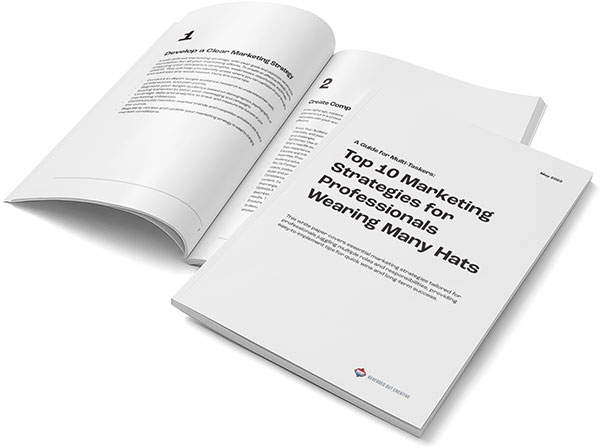
If you’ve been in the digital marketing business for even a short amount of time, you know that Facebook, Instagram, and YouTube are some of the biggest platforms out there. As marketers, we want to leverage these platforms because they have high engagement rates and huge audiences. But how do you know if these platforms make sense for your brand? And how can you leverage them effectively?
In this post, we’ll look at why it’s important for brands to not only use their own media channels but also spend time creating content on other people’s platforms (like YouTube). We’ll also look at some tips and tricks to help you get started with making videos on YouTube and Instagram. Let’s get into it!
Leveraging Facebook, Instagram, and YouTube as part of your digital marketing strategy.
- Know your audience and what they want to see.
- Use videos to help you tell your story.
- Use Facebook, Instagram, and YouTube as part of your digital marketing strategy.
How much digital video content is being watched?
Digital video content is becoming more important than ever, as you can see from the following statistics:
- YouTube is now the second-largest search engine in the world.
- YouTube has over 1 billion users and 1 million partners.
- Over 1 billion hours of content are uploaded every day on YouTube.
- 60% of all YouTube traffic comes from mobile devices!
Marketer challenges versus customer challenges on YouTube and Instagram.
Challenges for marketers are similar to those of customers on YouTube and Instagram, but with a few differences. While customers want to find content that’s relevant and useful to their business, marketers want the same thing (with a few twists).
Marketers face challenges with getting the right message across in order to do things like:
- Make consumers aware of their brand.
- Build trust with consumers.
- Tell a compelling story about why consumers should buy their product or service.
YouTube and Instagram reach, targeting, and user demographics.
YouTube is the second-most visited site in the world, with over 1.9 billion users. With a huge audience like this, it’s no wonder that many brands have invested heavily in their YouTube channels. This year alone, businesses spent $18 billion on advertising on the platform—and many of them were small-to-medium sized businesses that wouldn’t have been able to afford such large campaigns otherwise.
When you’re looking at your target audience on YouTube or Instagram, keep in mind that you can use these social media platforms to find people who are already interested in your brand or product and then tailor ads toward that audience.
YouTube SEO vs Google search SEO (and how to use both).
When it comes to SEO, YouTube and Google search are worlds apart.
However, both have their own ranking factors that determine how well a video ranks within the search engine results page (SERPs). And in today’s world of digital marketing, it’s important to use both platforms so you can get your videos seen by as many people as possible.
So what is YouTube SEO? With Google now having its very own app dedicated solely to watching video content on mobile devices like smartphones and tablets (think of it as an upgraded version of Chrome), there’s more competition than ever before for those coveted spots at the top of SERPs. To help combat this problem and make sure your business has its name out there for everyone to see—and click—you must understand how each platform works independently from one another so that when combined together, they’re working towards one common goal: getting more traffic into your website/storefront!
Why your brand needs content on these platforms.
You need to be where your audience is. If a large part of your target market spends their time on YouTube, it would be foolish not to create content there.
You need to provide value for your audience. Your goal should always be to provide something that is beneficial and useful for the people who follow you on social media and elsewhere on the web.
You need to be where your competitors are (but not in a bad way). If one of your main competitors has an active presence on Instagram or Facebook, it would make sense for you to have an active presence there as well — but not duplicate one another’s efforts by creating redundant posts and pages!
You want Google (and other search engines), to find your business when someone does a search about whatever topic it is that relates most closely with what type of business yours happens to be.
Who’s watching long-form digital video content?
In addition to understanding who’s watching long-form digital video content, it’s important to know the demographics of these viewers. According to a recent report from Forrester Research:
- The majority of adults (58%) have watched a long-form video within the past month—a number that has grown by eight percentage points since 2018.
- Women are more likely than men to watch long-form content on YouTube (53% versus 48%).
- People aged 18–24 years old and people aged 25–34 years old are more likely than their older counterparts to view long-forms weekly or daily across all platforms.
Reasons to supplement longer-form videos with shorter-form videos (and vice versa).
The first thing to keep in mind when it comes to short-form and long-form content is that both can be used to complement one another. The reason? While longer forms of video allow you more time to cover key points, shorter forms can provide an introduction or highlight those same points. In other words, each format serves a different purpose for different audiences.
Short form videos are also ideal for targeting younger audiences who may not have the patience to watch more than two minutes at once (and with good reason!). This is particularly true when it comes to social media platforms like Facebook and Instagram because they’re designed for quick consumption on mobile devices rather than desktop computers or laptops.
However, if you want your audience members who are older or don’t consume content on their phones as often—or at all—longer form videos are probably better suited for them since they aren’t likely being distracted by outside stimuli while watching such videos online.
How to leverage both long-form and short-form video content effectively.
It’s important to remember that different types of video have different uses. Longer-form content is ideal for thought leadership, while shorter-form content is better suited for brand awareness. The key is to use both effectively.
The general rule of thumb with short-form video is: build your audience first, then move on to longer videos after you’ve built trust with your audience by delivering quality shorter videos consistently over time. This will help ensure that people are ready to listen when you deliver longer-form content later down the line.
Strategy is the foundation of any marketing approach. Without it, you can’t make any decisions about how to deploy your assets. And once you have the right approach and the right tools, you can leverage Facebook, Instagram and YouTube in your business’ marketing strategy.
Knowing your audience, their motivations and how they make purchase decisions are essential parts of developing a strategy for marketing on Facebook, Instagram or YouTube.
It’s important to think about the following questions when creating a digital marketing strategy:
- How will this help me achieve my business goals?
- Who is my target market?
- What are their pains/needs? Why should I care about them as customers?
Conclusion
There are many benefits to leveraging Facebook, Instagram, and YouTube as part of your digital marketing strategy. These platforms can help you reach a wider audience, build brand awareness, and increase sales. But with so much competition in these spaces, it’s important that you have an approach that works for your business—and we’ve found the formula is simple: use short-form videos to tell stories about your products (or services) and long-form videos as educational content that informs audiences about something new or interesting.
If you have any questions or would like to develop a personalized marketing strategy for your business, feel free to contact us at Reversed Out Creative.
Contact Us
At Reversed Out Creative, we understand the challenges and opportunities presented by AI disruption. Our team of experts specializes in web design, SEO, graphic design, and digital marketing services. Reach out to us through our contact form to learn more about navigating the evolving job market and embracing the potential of AI. Together, let’s shape a future that combines human ingenuity with the power of AI.
Next Article: Website Design Trends For 2023 | Tips On Keeping Your Website Up-To-Date!
©2024 Reversed Out LLC. All rights reserved. Privacy Policy.


